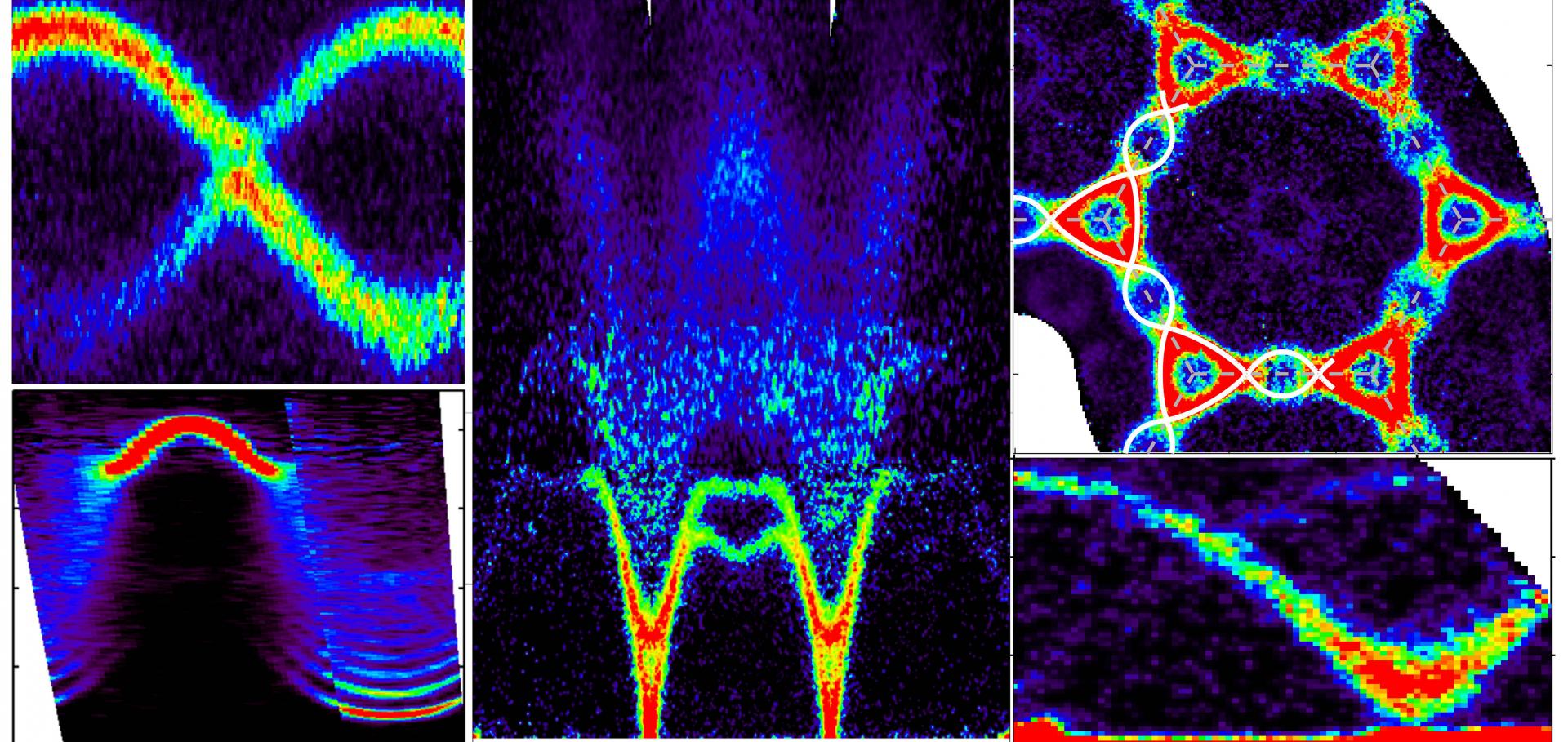Quantum criticality in an Ising chain: experimental evidence for emergent E8 symmetry.
Science 327:5962 (2010) 177-180
Abstract:
Quantum phase transitions take place between distinct phases of matter at zero temperature. Near the transition point, exotic quantum symmetries can emerge that govern the excitation spectrum of the system. A symmetry described by the E8 Lie group with a spectrum of eight particles was long predicted to appear near the critical point of an Ising chain. We realize this system experimentally by using strong transverse magnetic fields to tune the quasi-one-dimensional Ising ferromagnet CoNb2O6 (cobalt niobate) through its critical point. Spin excitations are observed to change character from pairs of kinks in the ordered phase to spin-flips in the paramagnetic phase. Just below the critical field, the spin dynamics shows a fine structure with two sharp modes at low energies, in a ratio that approaches the golden mean predicted for the first two meson particles of the E8 spectrum. Our results demonstrate the power of symmetry to describe complex quantum behaviors.Short-range correlations in quantum frustrated spin system
Physical Review B - Condensed Matter and Materials Physics 80:22 (2009)
Abstract:
We report on results of sound-velocity and sound-attenuation measurements in the low-dimensional spin-1/2 antiferromagnet Cs2 CuCl4 (TN =0.6 K), in external magnetic fields up to 15 T, applied along the b axis, and at temperatures down to 300 mK. The experimental data are analyzed with a theory based on exchange-striction coupling resulting in a qualitative agreement between theoretical results and experimental data. © 2009 The American Physical Society.Magnetic order and dynamics of the charge-ordered antiferromagnet La1.5Sr0.5CoO4
Phys Rev B AIP 80:13 (2009) 134414
Abstract:
We describe neutron-scattering experiments performed to investigate the magnetic order and dynamics of half-doped La1.5Sr0.5CoO4. This layered perovskite exhibits a near-ideal checkerboard pattern of Co2+/Co3+ charge order at temperatures below ~800 K. Magnetic correlations are observed at temperatures below ~60 K but the magnetic order only becomes established at 31 K, a temperature at which a kink is observed in the susceptibility. On warming above 31 K we observed a change in the magnetic correlations which we attribute either to a spin canting or to a change in the proportion of inequivalent magnetic domains. The magnetic excitation spectrum is dominated by an intense band extending above a gap of approximately 3 meV up to a maximum energy of 16 meV. A weaker band exists in the energy range of 20–30 meV. We show that the excitation spectrum is in excellent quantitative agreement with the predictions of a spin-wave theory generalized to include the full magnetic degrees of freedom of high-spin Co2+ ions in an axially distorted crystal field, coupled by Heisenberg exchange interactions. The magnetic order is found to be stabilized by dominant antiferromagnetic Co2+–Co2+ interactions acting in a straight line through Co3+. No evidence is found for magnetic scattering from the Co3+ ions, supporting the view that Co3+ is in the S=0 state in this material.Magnetic order and dynamics of the charge-ordered antiferromagnet La1.5Sr0.5CoO4
(2009)
Interplay between localized and itinerant d electrons in a frustrated metallic antiferromagnet, 2H-AgNiO2
(2009)


